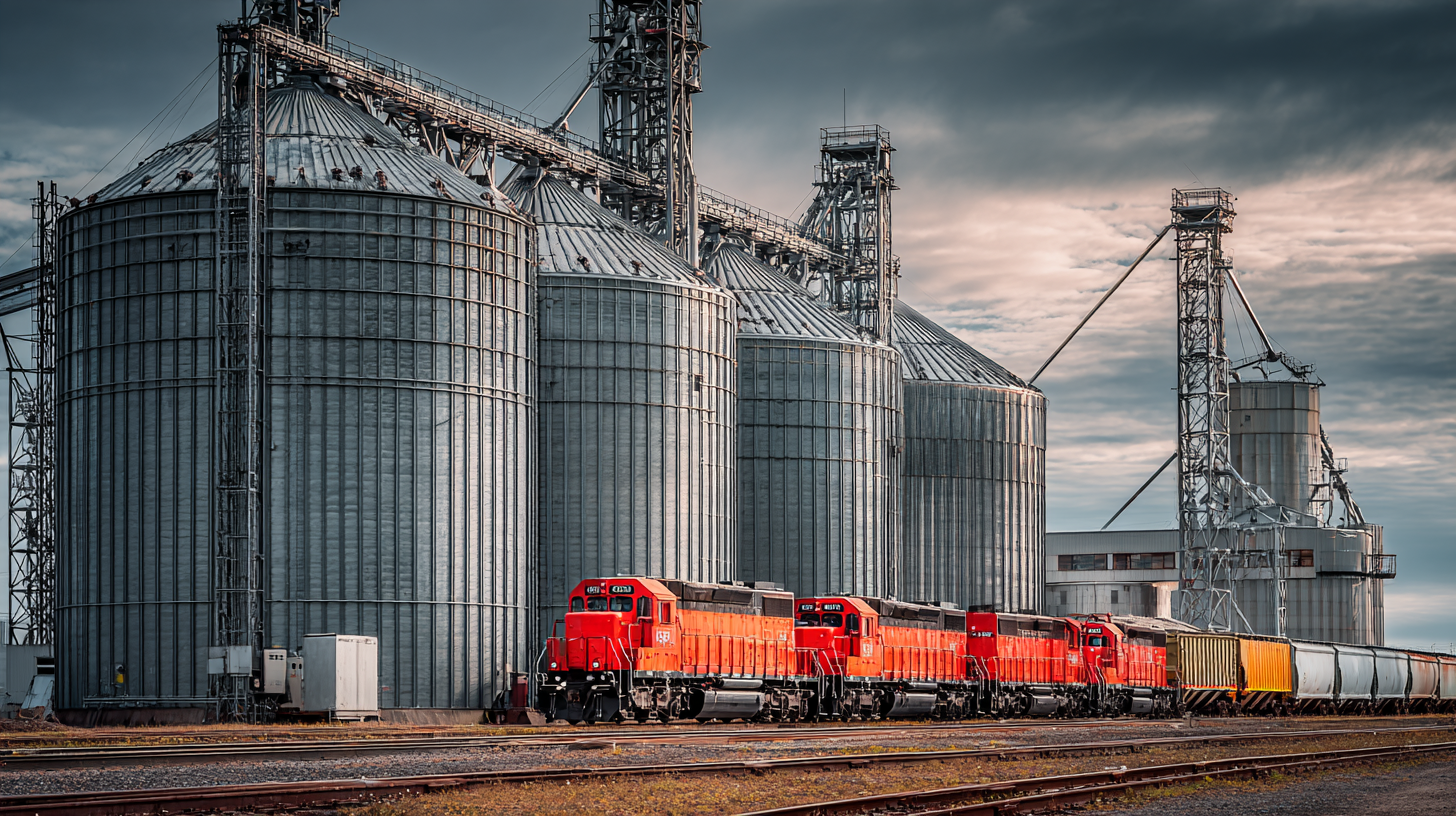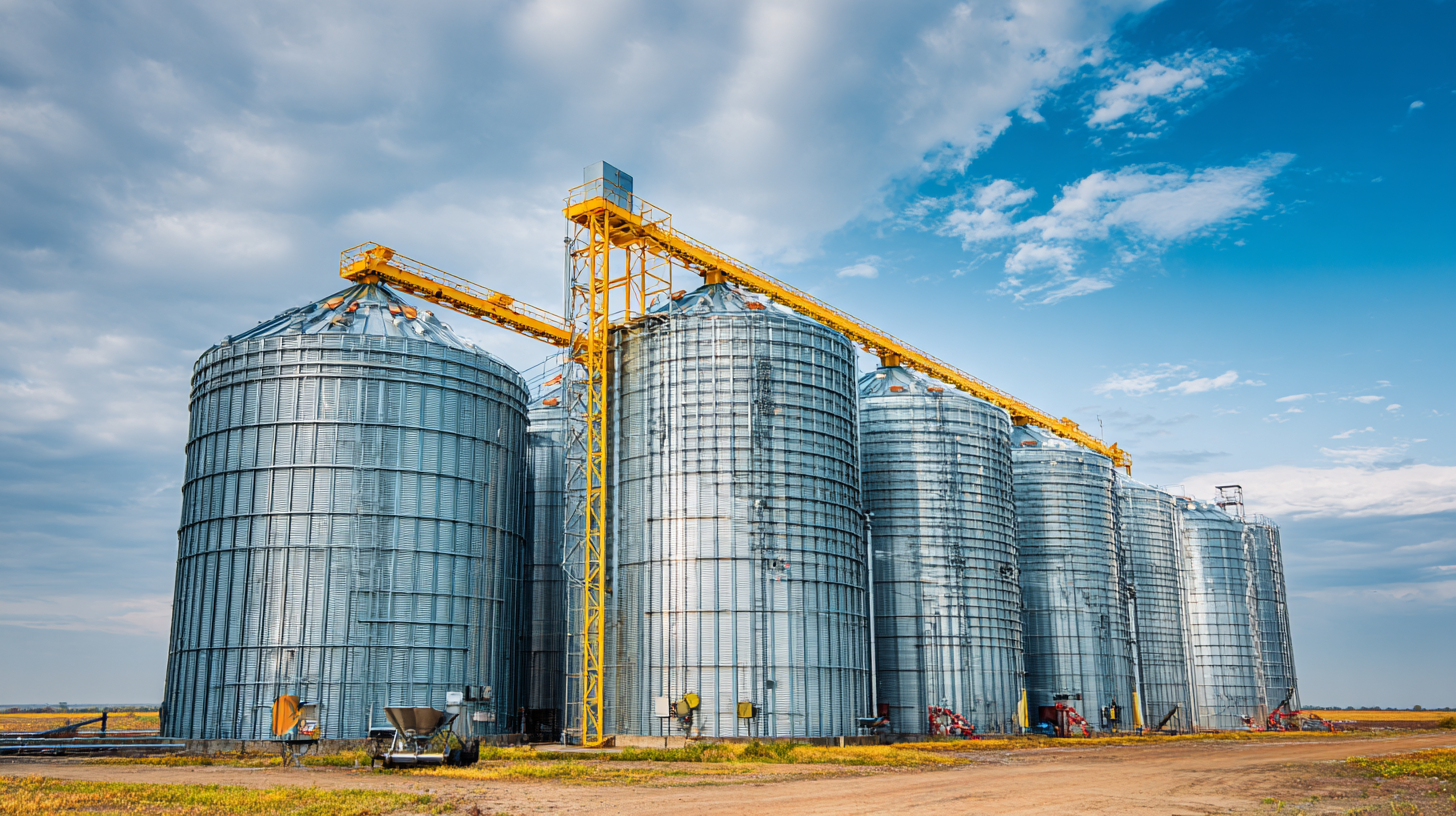Leave Your Message
As the agricultural industry faces increasing challenges related to climate change, market fluctuations, and post-harvest losses, the incorporation of advanced technologies such as the Grain Dryer is becoming pivotal for enhancing crop storage solutions. According to the Food and Agriculture Organization (FAO), around 14% of the world's food production is lost after harvest, primarily due to inadequate drying processes. The adoption of modern grain drying techniques can significantly reduce these losses, optimize storage conditions, and improve overall crop quality.

With the global grain-drying equipment market projected to reach USD 2.74 billion by 2025, farmers and agribusinesses are recognizing the necessity of investing in innovative drying solutions to meet the growing demand for high-quality grains. In this context, the future of agriculture is being reshaped as Grain Dryers evolve, providing effective solutions that promote sustainability and efficiency within the supply chain.
Efficient grain drying is crucial in modern agriculture, as it directly impacts the quality and marketability of harvested crops. According to the USDA, approximately 20% of harvested grain worldwide experiences spoilage due to improper drying and storage methods. This underscores the necessity for advanced grain drying solutions that not only preserve the grain's integrity but also enhance storage life. In regions with high humidity, such as the Midwest in the United States, moisture content can fluctuate significantly, leading to an increased risk of mold and mycotoxin development if grains are not dried adequately.
The adoption of modern grain dryers has been a game-changer for farmers. Research by the National Agricultural Statistics Service indicates that implementing high-efficiency grain dryers can reduce drying time by up to 50%, thereby increasing operational efficiency. Moreover, these technological advancements contribute to energy savings, with manufacturers reporting up to 20-30% less energy consumption compared to traditional drying methods. As the agricultural sector faces pressures from climate change and increasing global demand, investing in state-of-the-art grain drying systems is essential for enhancing productivity and ensuring sustainable farming practices.
The advancement of grain dryer technology is transforming agricultural practices, enhancing the efficiency of crop storage solutions significantly. Modern grain dryers incorporate innovative designs and materials that address the increasing demand for effective moisture management. The integration of IoT-driven systems facilitates real-time monitoring, allowing farmers to optimize grain drying processes by adjusting settings according to environmental conditions. According to a recent report, efficient grain drying can improve final grain quality by up to 15%, minimizing losses during storage.
Additionally, sustainable practices in agriculture are further bolstered by these upgraded technologies. For instance, the application of advanced drying methods can lead to energy savings of over 20%, which is crucial for reducing the carbon footprint in farming operations. As industry stakeholders focus on sustainability, innovations such as energy-efficient dryers and automated controls are key contributors. By harnessing these technologies, the future of agriculture is poised not only to enhance productivity but also to promote eco-friendly practices that align with global sustainability goals.

The economic impact of grain dryers on crop storage and profitability is profound, especially in the context of modern agricultural challenges. As agricultural markets experience volatility, the ability to efficiently manage grain storage plays a critical role in stabilizing farmers' incomes. Grain dryers significantly reduce moisture content, which not only preserves grain quality but also minimizes post-harvest losses attributed to spoilage and pest infestations. Increased investment in grain drying technology enhances the capacity of storage facilities, allowing farmers to store larger quantities of their yields during peak production times, thereby reducing reliance on immediate sales at potentially lower prices.
Moreover, advancements in grain storage solutions, such as improved legume pastures, have demonstrated substantial economic value and resilience within integrated crop-livestock systems. These innovations contribute to enhanced soil health and reduced agricultural risks, enabling farmers to adapt to the challenges posed by climate change. For instance, Wisconsin's new shuttle loader facility exemplifies how modern infrastructure can accommodate significant grain storage needs, indicating a trend towards larger-scale, more efficient operations. This shift not only supports individual farmer profitability but also fosters a robust agricultural economy capable of withstanding external pressures.
Efficient grain drying practices play a crucial role in reducing post-harvest losses and enhancing sustainability in agriculture. According to the USDA, approximately 10-20% of harvested grain can be lost due to improper storage and drying techniques. By employing advanced grain dryers, farmers can minimize moisture content effectively, which not only protects crop quality but also significantly reduces the risk of mold and pest infestations. Reports indicate that modern drying methods can increase storage efficiency by up to 30%, leading to lower energy consumption and a reduced carbon footprint.
Additionally, efficient grain drying contributes positively to environmental sustainability. A study published in the Journal of Cleaner Production found that integrating energy-efficient drying systems could decrease greenhouse gas emissions by 40% compared to conventional methods. Technologies such as solar-assisted grain dryers and heat recovery systems not only optimize energy use but also utilize renewable resources effectively, aligning agricultural practices with global sustainability goals. These advancements in grain drying not only secure farmer profits but also ensure a more environmentally friendly approach to food production.
 As the agricultural sector evolves, the integration of smart technology into grain drying solutions is set to revolutionize crop storage.
Advanced sensors, IoT devices, and machine learning algorithms are becoming pivotal in monitoring moisture levels and temperature during the drying process.
This technology not only enhances efficiency but also minimizes energy consumption, allowing farmers to optimize their resources while maintaining the quality of their grains.
As the agricultural sector evolves, the integration of smart technology into grain drying solutions is set to revolutionize crop storage.
Advanced sensors, IoT devices, and machine learning algorithms are becoming pivotal in monitoring moisture levels and temperature during the drying process.
This technology not only enhances efficiency but also minimizes energy consumption, allowing farmers to optimize their resources while maintaining the quality of their grains.
Moreover, smart grain dryers enable real-time data analysis and remote monitoring, empowering farmers to make informed decisions promptly.
Automated systems can adapt drying conditions based on environmental changes, ensuring that crops are stored under ideal conditions.
The future of agriculture lies in these innovations that promise to enhance productivity and sustainability while also addressing the challenges posed by climate change.
As we move forward, embracing these technological advancements will be crucial in transforming traditional practices into more efficient and effective solutions.






